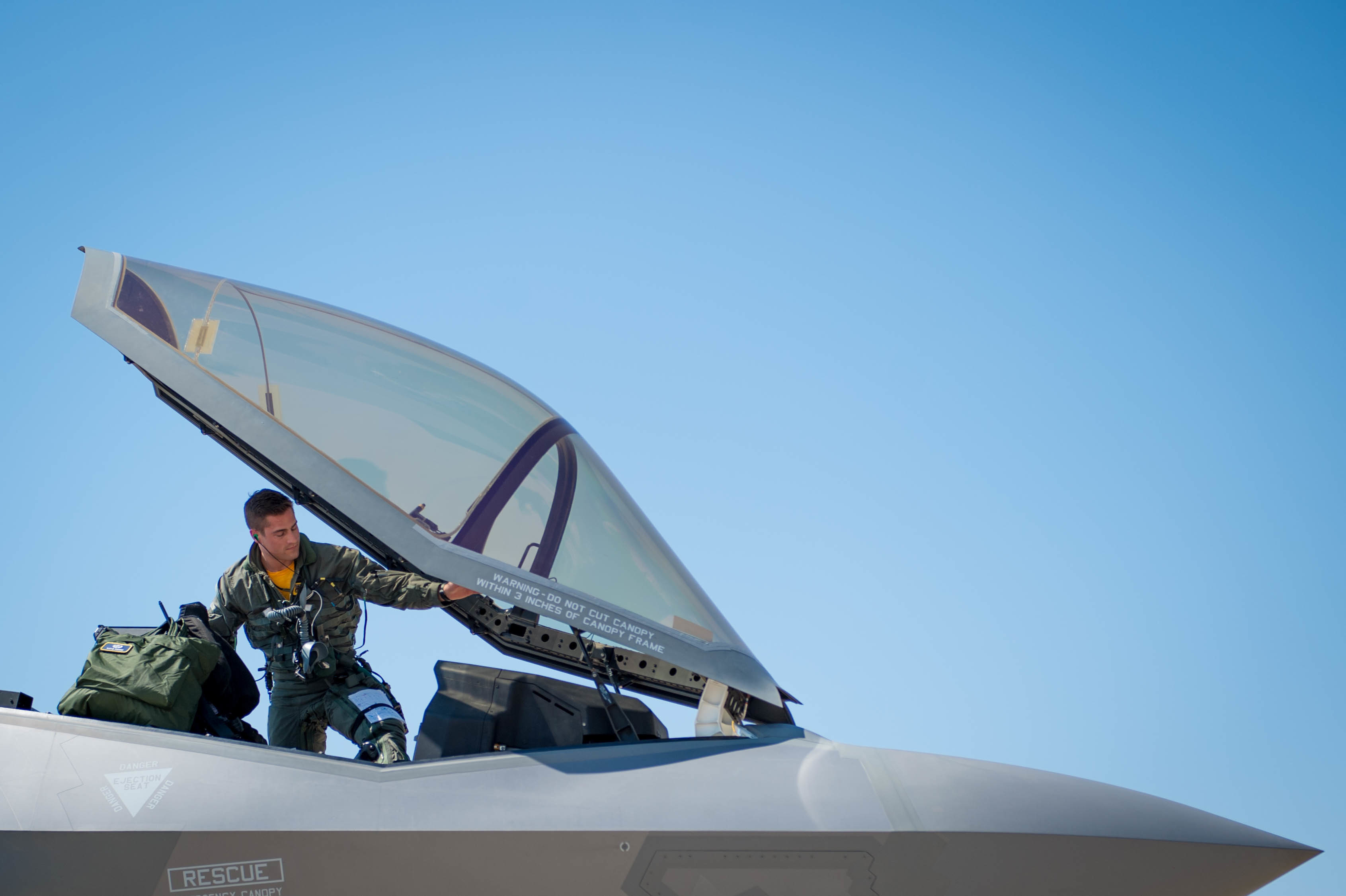
A USAF F-35 student pilot climbs into an F-35 at Luke AFB, Ariz., July 7, 2017. Air Force photo by SSgt. Jensen Stidham.
The Air Force’s training chief wants F-22 and F-35 basic instruction aircraft modified to full combat capability, but he is also exploring ways to provide all-up training if that proves unaffordable.
Lt. Gen. Steven Kwast, head of Air Education and Training Command, said teaching flying with out-of-date jets poses a danger of “negative learning” or the need for expensive further training when junior F-22 and F-35 pilots reach frontline units. But he recognizes, “it all comes down to money,” as to whether USAF can afford the modifications.
“What I want is, I want my cake and [to] eat it, too. I’d like all our aircraft concurrent,” so that when there’s a software update to the F-35 and F-22 fleets, even the training aircraft get it so “we have congruency” among the platforms. “I don’t want to live with … an architecture where the fighter has a different [software] load than the trainer. That’s unacceptable to me. So I do not want to take pressure off that,” he said.
However, “in the short run,” given the demands to fix readiness issues and aircraft age across the force, as well as “the hole we’re in with sequestration,” Kwast realizes, “we can’t do everything.” As a stopgap, he said USAF is looking into virtual technologies that can teach stealth pilots the capabilities in the latest versions of their jets while they get the necessary “visceral” experience—the environment around the jet, the cockpit, takeoffs and landings, etc.—in the real thing.
An Air Force lab in Austin, Texas, is finding out that the brain is “phenomenal at ‘blending’” the visceral experiences with the more “cognitive” aspects of employing the aircraft, Kwast said. The visceral tasks can be learned easily and quickly, but the cognitive elements take “a lot of repetitions,” and a virtual reality approach will help drive down costs of teaching them, he explained.
VR approaches can also offer a training space where pilots “can properly train the habits of mind of the frontline aircraft where there are no limits to range space, … weather, … adversaries, … or threat emitters that may or may not be accurate waveforms.” They can “practice the habits of decision-making.”
These applications should be available soon, Kwast said, but he’s not giving up on getting the training jets compatible with frontline aircraft.
“We’re building this model so you have the speed and agility … to have access to this training on-command, on-demand, on any device, anywhere in the world,” Kwast added. “Now, there are security issues, but those security issues are relatively easy to solve.” He plans on “flooding the market” with such devices so pilots of any jet can reap the same benefits, such as being able to train when the weather doesn’t cooperate.
“We are … already migrating” the VR technology “to some pilot training bases as a testbed,” Kwast noted. He’s hoping the technology will “spread like wildfire.”
For more on AETC’s efforts, see Thriving and Surviving in Training from the May issue of Air Force Magazine.